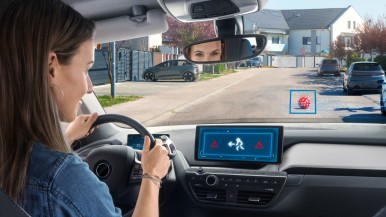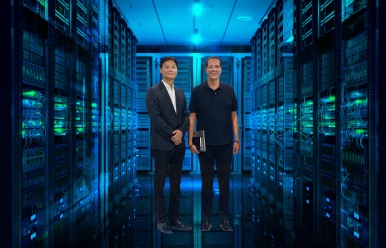“Key automated, connected and electrified innovations will transform the ways we travel, do business, spend our commute time and care for our vehicles,” said Mike Mansuetti, president of Bosch in North America.
At the North American International Auto Show (NAIAS), Bosch will present several innovations that will make vehicles more efficient, more context-aware and much safer. From in-car systems to sensors, Bosch is delivering a full stack of automotive solutions for today and the future.
Sustainable performance across powertrain options
As electrification goes mainstream, the powertrain is evolving. Consider the Bosch eAxle, which made its global debut at NAIAS 2017. Since that time, eAxle has experienced great success, rapidly becoming a technology solution for start-up and traditional OEM's alike.
The innovative eAxle combines the electric motor, power electronics and transmission into one compact unit that directly drives the vehicle. At NAIAS 2018, Bosch will showcase the eAxle and how it fits into the exciting future of electric vehicles.
There will also be other key innovations on display. For example, Bosch’s high-efficiency thermal management system can solve significant challenges for electric vehicles. The system is designed to extend an electric vehicle’s driving range while keeping its fast-charging battery cool.
The internal combustion engine (ICE) will remain a significant part of mobility into the forseeable future. Thanks to Bosch advancements such as port and direct gasoline injection (P-DI), ICE engines are seeing significant gains in efficiency and performance. P-DI combines two normally separate fuel-injection approaches into one innovative system. The strengths of each approach perfectly complements the other, resulting in increased fuel efficiency alongside a decrease in emissions.
Regardless of the powertrain approach, engines are becoming more complex. Modern vehicles have as many as 100 standalone control units. Bosch’s ap-proach to vehicle computing is pioneering and setting new standards in vehicle systems. The Bosch Vehicle Control Unit (VCU) is one of several solutions, which can provide substantially higher compute for added functions while reducing the number standalone units. This frees up valuable installation space, reduces vehicle weight, and simplifies communication among control units.
While the VCU reduces complexity, it also enables future innovations by providing a scalable platform for the increasingly complex electric/electronic architectures needed to support new technologies. As electrified, automated and connected solutions become more prevalent, the complexity of E/E archi-tectures is on the rise. The performance demands on these architectures are also intensifying, and Bosch is bolstering these systems for an increasingly in-terconnected future.
Connected solutions keep vehicles and drivers secure and informed
Automakers and providers require the right hardware for various connected services and applications. In this space, Bosch offers a wide array of versatile devices, from easy retrofit options to deeply embedded devices. Regardless of the size or form factor, each of these devices provides optimal performance for safety-critical services.
Connected services are another essential piece of the mobility puzzle. The Bosch Automotive Cloud Suite offers a comprehensive software toolkit com-prising smart solutions, cloud services and device management. It enables au-tomakers and mobility service providers to develop services for drivers and de-ploy them quickly to a wide market.
A comfortable, safe journey to an accident-free future
In order for fully automated driving to reduce accidents in the future, redundancy in safety-critical systems such as braking and steering is an absolute neces-sity.
Bosch is working on redundant braking solutions for all levels of automated driving, including a fail-degraded brake system that combines iBooster and ESC (Electronic Stability Control) systems. At NAIAS, Bosch will showcase its com-prehensive range of braking innovations, including redundant braking for auto-mated driving.
Bosch is also a leader in redundant steering solutions. At NAIAS 2017, Bosch introduced its Electric Power Steering (EPS) system, which offers fail-operational functions. The system, which enables drivers and autopilot systems to make safe stops in the rare case of a single failure, is a major development in the evolution of fully automated driving.
BOSCH BOOTH: Monday to Thursday, January 15-18, 2017, on Level Three, Room 330A, Cobo Center.





